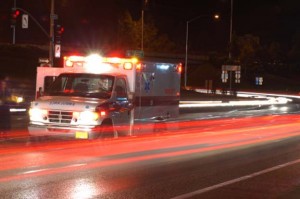
After years of declines, highway fatalities were up 7.7% 2015 – the second year in a row for an increase – leaving officials to figure how to solve the problem.
While final figures have yet to be tallied, safety experts were forecasting the July 4 weekend would see an increase over last year’s fatality and injury totals.
In fact, the National Safety Council predicted as many as 409 Americans would be killed on this country’s roadways during the long weekend, and another 49,500 injured. If proven to be true, they’ll be the highest numbers since 2008.
On average, there are 37% more highway fatalities on July 4 than the average July day, according to a study of federal accident data. And when traffic increases, so does the death toll, according to the NSC.
Across the nation, state authorities are reporting that highway fatalities are up for the year. And that follows a 7.7% increase in 2015, according to data from the National Highway Traffic Safety Administration.
An estimated 35,200 people died in 2015, up from the 32,675 reported fatalities in 2014. Although the data are preliminary and requires additional analysis, the early NHTSA estimate shows nine out of 10 regions within the United States had increased traffic deaths in 2015, NHTSA noted, adding that the most significant increases came for pedestrians and bicyclists.
After declining for most of the past decade, the nation’s roadway death toll is on the rise again safety officials and analysts blame falling gas prices and a growing economy.
“As the economy has improved and gas prices have fallen, more Americans are driving more miles,” said NHTSA Administrator Mark Rosekind. “But that only explains part of the increase.
(U.S. highway fatalities surge 8% in 2015. For details, Click Here.)
“Ninety-four percent of crashes can be tied back to a human choice or error, so we know we need to focus our efforts on improving human behavior while promoting vehicle technology that not only protects people in crashes, but helps prevent crashes in the first place.”
The estimated increase in highway deaths follows years of steady, gradual declines. Traffic deaths declined 1.2% in 2014 and more than 22% from 2000 to 2014.
The increases in the past two years come despite the fact that new vehicles are, by all measureable standards, safer than ever. Anti-lock brakes and driver-side and passenger-side airbags are standard equipment on new models and often supplemented by emergency braking systems, adaptive cruise control and a litany of other technological wizardry, one would expect the numbers to be falling.
(Click Here for details about the rise in pedestrian deaths in the U.S. last year.)
However, a few factors are playing a role in the rise. First and foremost is technology. What it gives, it also takes away. With more and more distractions at the fingertips of drivers, they’re occasionally putting aside what should be their primary focus: driving the vehicle, and oftentimes with deadly results.
Additionally, but a little talked about fact is that seatbelt usage in the U.S. has stagnated at about 88.5%. Many may see that as a stellar figure, but increased belt usage contributed mightily to the decade-long decline in road deaths.
NHTSA show that almost half of passenger vehicle occupants (49%) who were killed in 2014 were unrestrained. In addition, 57% of passenger vehicle occupants killed at night were not wearing their seat belts, compared to 41% killed during daytime. In 2014, men wore their seat belts at a lower rate than women did – 53% of men in fatal crashes were unbelted, compared to 40% of women.
(To see more about why car crashes are the No. 1 killer of teenagers, Click Here.)
NHTSA believes that a new push to remind folks to “Click It or Ticket” may help push the number of traffic deaths back down nationally. “We have made enormous progress as a nation in increasing seat belt use, but far too many people are still dying because they are not buckled up during crashes,” Rosekind notes.
